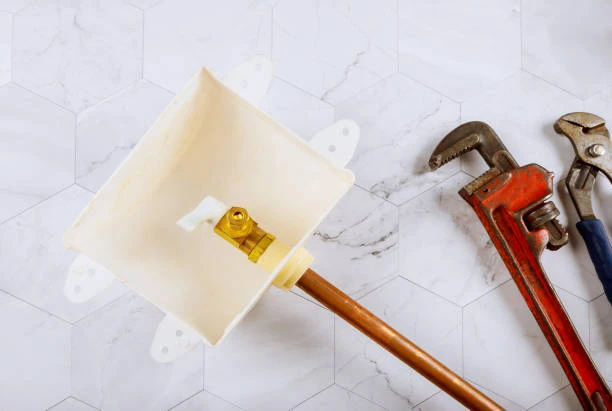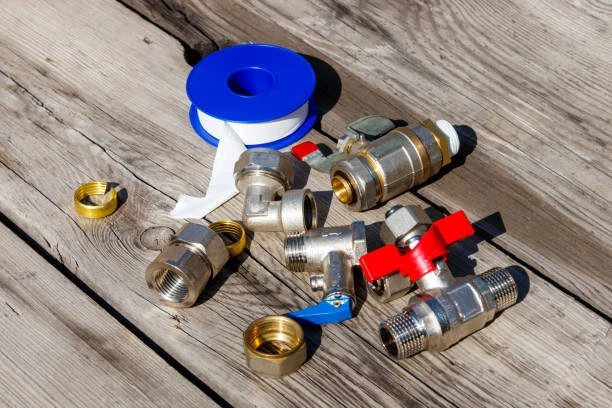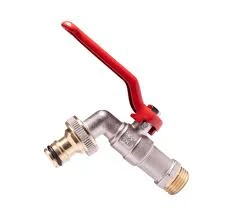In the world of plumbing, the term “brass fittings” usually evokes thoughts of reliability and durability. However, when it comes to skinny brass fittings, concerns about performance and longevity can arise. These seemingly innocuous components play a critical role in plumbing systems, but their design and material quality can significantly impact their effectiveness. This article explores the limitations of skinny brass fittings, potential alternatives, and best practices for ensuring your plumbing system remains robust and reliable.
Understanding Brass Fittings
Brass fittings are components used to connect different sections of pipes, hoses, and tubing in plumbing and construction applications. Made primarily from a copper-zinc alloy, they are known for their resistance to corrosion, high temperatures, and pressure. Common types of brass fittings include:
- Elbows: Used to change the direction of piping.
- Tees: Allow for branching off to another line.
- Couplings: Connect two sections of pipe.
While traditional brass fittings offer various advantages, skinny brass fittings can present unique challenges.
The Limitations of Skinny Brass Fittings
Skinny brass fittings refer to those that have a reduced wall thickness or smaller diameter compared to standard fittings. While they may seem like an attractive option due to their lightweight nature, several issues can arise:
1. Structural Integrity
One of the primary concerns with skinny brass fittings is their structural integrity. The reduced thickness may not withstand high pressures and stresses, making them more susceptible to cracking or failure. This can be especially problematic in high-demand applications, such as commercial plumbing systems.
2. Corrosion Resistance
While brass fittings are generally resistant to corrosion, thinner fittings may not perform as well over time. The reduced material can lead to quicker wear and tear, exposing the underlying metal to corrosive elements in water, which can lead to leaks and other failures.
3. Connection Issues
Skinny brass fittings may present challenges during installation. Their lightweight nature can make them difficult to secure, leading to improper connections that increase the risk of leaks. Inadequate sealing may result in water escaping, potentially causing damage to surrounding areas.
4. Limited Compatibility
Skinny fittings may not be compatible with standard pipe sizes and fittings. This can complicate repairs and installations, requiring additional adapters or custom solutions that may not be readily available.

When Are Skinny Brass Fittings Used?
Despite their limitations, skinny brass fittings are sometimes used in specific applications where weight and space are significant concerns. Examples include:
- Portable equipment: In applications where weight is critical, such as mobile or temporary plumbing setups, skinny fittings might be preferred.
- Low-pressure systems: Skinny fittings may be sufficient for low-pressure applications where the risk of failure is minimal.
However, it’s crucial to evaluate whether the trade-offs are worth the potential drawbacks.
Alternatives to Skinny Brass Fittings
If you’re considering plumbing options, various alternatives to skinny brass fitting may provide better performance and reliability:
1. Standard Brass Fittings
Opting for standard brass fittings is often the best choice for most plumbing applications. These fittings are designed to withstand high pressures and are more resistant to wear and corrosion, ensuring a longer lifespan for your plumbing system.
2. Stainless Steel Fittings
Stainless steel fittings offer excellent durability and corrosion resistance, making them ideal for high-pressure and corrosive environments. They can handle extreme temperatures and are often used in industrial applications.
3. PEX Fittings
Cross-linked polyethylene (PEX) fittings have gained popularity in recent years due to their flexibility, resistance to freezing, and ease of installation. PEX is also less likely to corrode and can accommodate temperature changes without risk of bursting.
4. PVC Fittings
Polyvinyl chloride (PVC) fittings are another alternative, particularly for drainage and waste applications. While not suitable for hot water lines, PVC is lightweight, easy to install, and highly resistant to chemical corrosion.
Best Practices for Choosing Brass Fittings
To ensure the reliability of your plumbing system, consider the following best practices when selecting brass fittings:
1. Evaluate Your Needs
Assess the specific requirements of your plumbing system, including pressure, temperature, and the environment in which the fittings will be used. Choose fittings that meet or exceed these requirements.
2. Prioritize Quality
Investing in high-quality brass fitting can pay off in the long run. Look for fittings from reputable manufacturers that adhere to industry standards.
3. Consult Professionals
When in doubt, consult with plumbing professionals who can offer expert advice on the best fittings for your system. Their experience can help prevent costly mistakes.
4. Regular Maintenance
Ensure regular maintenance and inspections of your plumbing system. Checking for leaks, corrosion, and wear can help identify issues before they become significant problems.
Conclusion
While skinny brass fittings may seem like a convenient option, their limitations can lead to significant issues in plumbing systems. Structural integrity, corrosion resistance, and compatibility are crucial factors to consider when choosing fittings. Homeowners and contractors should prioritize quality and suitability over convenience to ensure a reliable plumbing system. By opting for standard or alternative fitting and adhering to best practices, you can avoid the pitfalls associated with skinny brass fitting.
Frequently Asked Questions (FAQs)
1. What are brass fitting us for?
Brass fitting connect different sections of pipes in plumbing and construction applications, allowing for various configurations.
2. Why are skinny brass fitting a concern?
Skinny brass fitting may have reduced structural integrity, leading to increased risks of cracking, corrosion, and improper connections.
3. What are the alternatives to brass fitting?
Alternatives include standard brass fitting, stainless steel fitting, PEX fitting, and PVC fitting, each offering different benefits.
4. How do I choose the right fittings for my plumbing system?
Evaluate your plumbing system’s requirements, prioritize quality, consult professionals, and perform regular maintenance to ensure reliability.
5. Are skinny brass fitting ever appropriate to use?
Skinny brass fitting may be used in specific low-pressure or portable applications, but caution is advised due to their limitations.


















